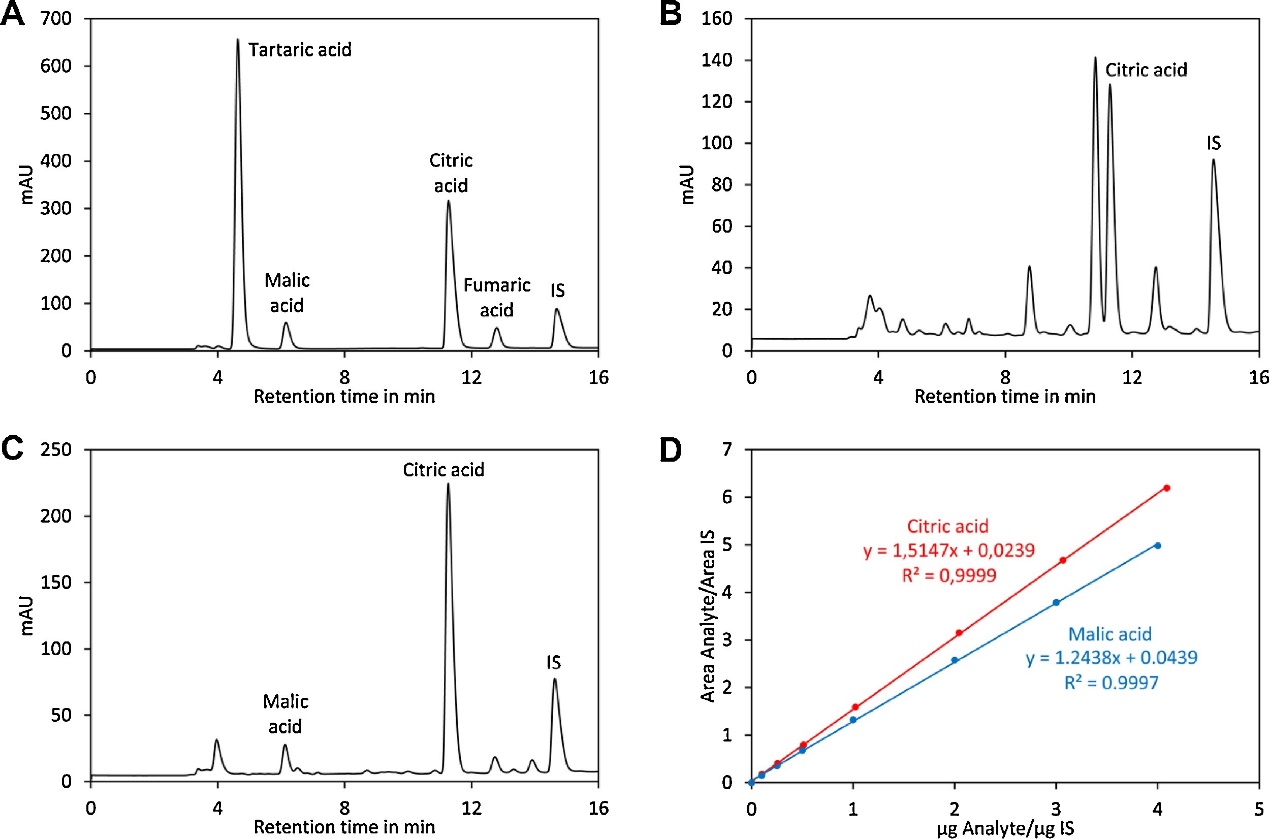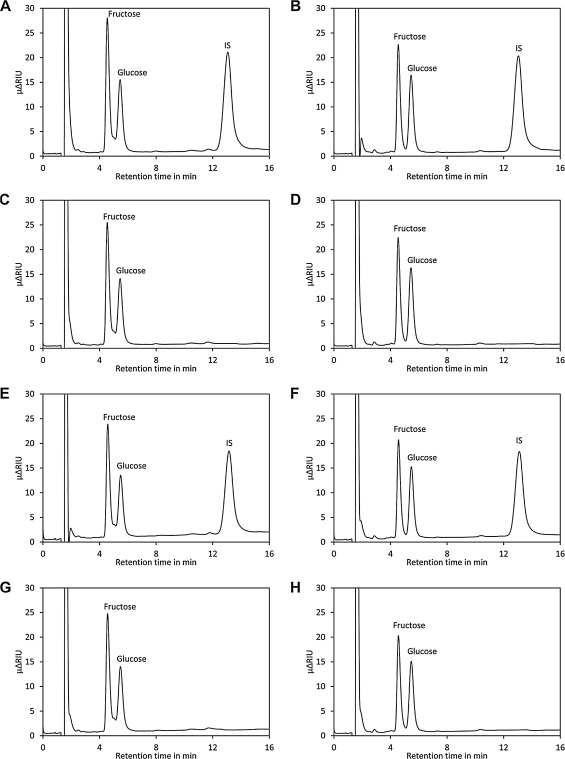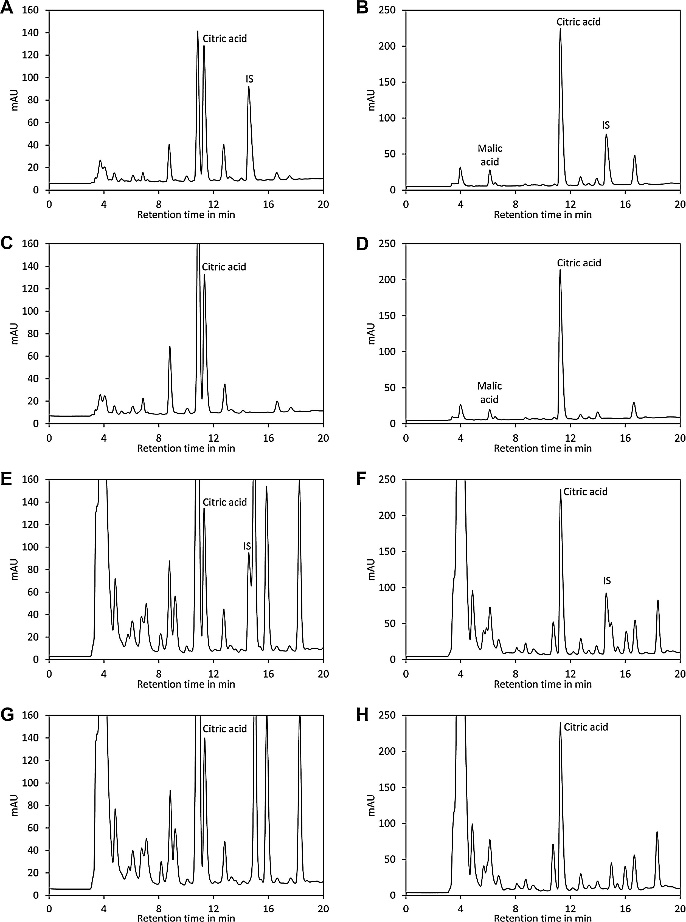Title: Quantification of sugars and organic acids in tomato fruits
Journal: MethodsX
Published: 2018
Background
Sugar and organic acid contents are crucial for the flavor of tomato fruits and are important breeding traits. The contents of glucose, fructose, citric acid, and malic acid in tomatoes vary with ripeness and developmental stage. While glucose is predominant in unripe tomatoes, ripe fruits tend to have slightly more fructose. Citric acid is the dominant organic acid in tomatoes, although malic acid levels fluctuate throughout ripening. This study aims to provide an improved method for accurately quantifying sugars and organic acids in tomato fruits, with a focus on high reproducibility and efficient removal of interfering compounds. The method uses solid phase extraction (SPE), high-performance liquid chromatography (HPLC), and gas chromatography-mass spectrometry (GC-MS) for analysis.
Materials & Methods
Chemicals and Solutions:
- Tricarballylic acid (10 g/l)
- Lactose (100 g/l)
- Sugars standard mix (glucose, fructose, sucrose)
- Organic acids standard mix (citric acid, malic acid)
- Acetonitrile (ACN) 100%, 90%, and 40%
- Phosphoric acid (4 mol/l and 400 mmol/l)
- Ammonia solution (1 mol/l)
- Eluents for organic acids (20 mM ammonium phosphate pH 2.6, with and without ACN)
- Eluent for sugars (ACN 80%)
Materials:
- Miracloth
- Chromabond NH2 100 mg columns
- Solid phase extraction apparatus
- Ultra-Turrax or Warring Blender homogeniser
- Nucleodur 100-5 NH2 columns and precolumns
- Nucleodur 100-5 C18ec columns and precolumns
Instrumentation:
HPLC System:
- Isocratic HPLC system with RI detector for sugars
- Binary high pressure gradient HPLC system with UV detector for organic acids
- Components: SCL-10A system controller, LC-10ADvp pumps, FCV-10AL valve, SIL-10A autosampler, CTO-10ASvp column oven, SPD-10A UV detector, Agilent 1047A RI detector
- Software: Clarity for chromatogram evaluation
Protocol:
Sample Preparation:
- Homogenise tomato fruits.
- Centrifuge the homogenate.
- Filter through Miracloth.
- Filter through a 0.22 µm membrane syringe filter.
- Measure the density of the supernatant.
Solid Phase Extraction (SPE):
- Prepare the sample with internal standards and ACN.
- Centrifuge the sample.
- Equilibrate the SPE column.
- Load the sample onto the column.
- Wash the column.
- Elute and collect the analytes.
Analysis of Sugars by HPLC:
- Prepare the sample and standards.
- Analyse using a Nucleodur NH2 column with ACN 80% eluent.
- Detect using an RI detector.
 Analysis of organic acids by HPLC.
Analysis of organic acids by HPLC.
Analysis of Organic Acids by RP-HPLC:
- Prepare the sample and standards.
- Analyse using a Nucleodur C18ec column with a gradient elution.
- Detect using a UV detector at 210 nm.
Results
Validation of the Method:
Recovery Rates:
- Sugars: >98% recovery for fructose, glucose, sucrose, and lactose.
- Organic acids: ~95% recovery for citric acid, malic acid, tartaric acid, and tricarballylic acid.
Repeatability:
Sugars:
- Intra-day repeatability: Glucose (2.7-5.7% SD), Fructose (0.9-4.6% SD)
- Inter-day repeatability: Glucose (3.5% SD), Fructose (4.2% SD)
Organic Acids:
- Intra-day repeatability: Citric acid (1.1-2.1% SD)
- Inter-day repeatability: Citric acid (2.2% SD)
Comparison with Other Methods:
Sugars:
- The method using NH2 SPE columns showed high repeatability and recovery rates.
- Compared to other methods, this method allows simultaneous analysis of sugars and organic acids with minimal column contamination.
 Effect of SPE on analysis of sugars by HPLC.
Effect of SPE on analysis of sugars by HPLC.
Organic Acids:
- The method using NH2 SPE columns provided clean chromatograms with high repeatability.
- Compared to other methods, this method enhances selectivity and reduces interference from non-acidic compounds.
 Effect of SPE on analysis of organic acids by HPLC.
Effect of SPE on analysis of organic acids by HPLC.
Conclusion
The described methods allow reliable quantification of sugars and organic acids in tomato and other fruits.
The use of NH2 SPE columns enhances the purification of organic acids, improves selectivity, and minimizes column contamination, making it a robust and efficient approach for HPLC analysis.
Reference
- Agius, Carlos, et al. "Quantification of sugars and organic acids in tomato fruits." MethodsX 5 (2018): 537-550. https://doi.org/10.1016/j.mex.2018.05.014




